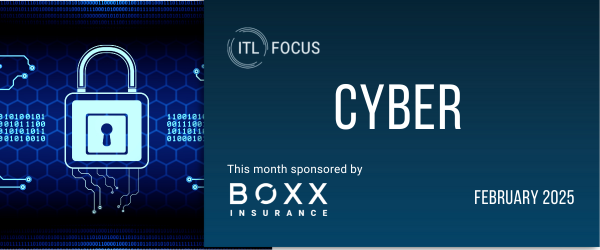Of late, cloud computing adoption has gained such traction enterprise-wise that it is rightly called the new normal. The 2019 State of the Cloud report by RightScale shows that 94% of organizations use cloud, shifting their corporate workload there. High costs are for now the greatest concern for cloud adopters, but organizations work on tackling it, either on their own or with the help of Google, Microsoft or AWS consulting specialists.
Despite being welcomed by most, cloud computing is still associated with plenty of complications and threats that haunt adopters and skeptics alike. As a result of persisting misconceptions, some enterprises adapt ill-suited cloud policies and practices, while others abandon cloud migration at early stages or steer clear of it altogether.
This article will take a closer look at the top five cloud software risks and examine the ways enterprise decision-makers can contain and manage them.
Data security loopholes
Security concerns are the main reason why cloud computing becomes a no-go option for some companies. This consideration particularly inhibits industries handling sensitive customer data: Banks, medical facilities and such can’t afford a single data breach and therefore by default opt for on-premises software.
But these fears are exaggerated. The strength of security boils down to the measure introduced into a corporate environment. Cloud security provisions indeed differ from on-premises ones, but, when enforced correctly, they render the system impregnable.
See also: Cloud Computing Wins in COVID-19 World
At the same time, the cloud beats on-premises systems when it comes to compliance with data privacy and security regulations. Since cloud solutions must adhere to every legislative change, the vendors make the effort to update their software timely. On-premises security measures, on the other hand, are taken by each enterprise individually and may be insufficient or timed poorly. Therefore, cloud software can facilitate full compliance for businesses required to follow the GDPR, HIPAA and other regulations.
The prohibitive cost of ownership
Enterprises tend to adopt cloud computing to optimize costs but do not necessarily achieve the desired results. Cloud software is commonly known as a cheaper option because the adopter does not incur implementation, maintenance and security costs. In reality, hidden incremental costs do pile up.
So, how to estimate whether a cloud solution will indeed be cost-effective?
First off, the responsible parties should factor in the enterprise expansion in the foreseeable future. Because SaaS, PaaS and IaaS licenses directly depend on the number of users, the workforce growth will force subscription prices upward.
Availability of IT resources is another significant part of the equation. When the company employs a full-time development and support team, then the maintenance of on-premises software should not become a large cost component. If this is not the case, cloud software is a more reasonable option. An outsourced cloud-savvy team can easily cover the demands of initial customization and occasional support, while the updates and patches will be the cloud vendor’s responsibility entirely.
The final consideration is the time gap between the project kickoff and the moment the software starts bringing value. For companies looking for quick ROI, cloud solutions offer a much shorter time to market compared with traditional on-premises setups.
Software discontinuation
Another of cloud adopters’ fears is that a vendor may all of a sudden go out of business, taking along the product. The possibility of software discontinuation indeed exists, but this is not as common an occurrence as one may think. Oftentimes, companies abandon the software, either cloud-based or on-premises, that grew outdated in the modern technological context and therefore ceased to be valuable to its users. In this case, the customers are alerted well in advance and given enough time to find a substitute.
To mitigate the risks of possible cloud platform shutdown, companies need to take precautions against vendor lock-in and associated disruptions:
- Map out an exit strategy before subscribing to a cloud-based product.
- Study the contract carefully to clearly understand vendor obligations.
- Maintain data in easily exportable formats.
Management complexity
Hybrid and multi-cloud environments are notorious for bringing confusion into the enterprise setting. As companies take more and more of their workload to the cloud, they sooner or later find themselves unable to fully govern the spiraling infrastructure and ensure its security. This can result in the failure to realize the full potential of the infrastructure, as well as in performance botches, security lags and above-budget spending.
However, proper planning undertaken way ahead of multi-cloud adoption can greatly mitigate such downsides. Starting from the solution architecture and network topology to interoperability mechanics, the environment should be laid out by experts.
Apart from this, a cloud management platform can provide better visibility across multiple accounts, along with cost and security control.
Weak connection and network failure
Ironically, the very thing that makes the cloud possible — internet connection — causes most problems in a cloud environment. Cloud outages strike enterprises large and small and cause data and money losses — in 15% of cases, over $5 million per hour of server downtime. These connectivity issues have a particularly damaging impact on hybrid cloud adopters, which rely on unhindered connectivity for unlimited data transmission between different cloud platforms and enterprise data centers.
See also: Cloud Takes a Starring Role
Despite being such a thorny aspect, internet connection still has the status of a no-man’s land. On decision-makers’ side, connection tends to be overshadowed by other seemingly more pressing matters such as security, compliance or interoperability. What is more, there is still no consensus about who should take full responsibility for cloud outages—the owner or the service provider. While 65% of businesses rely on cloud software providers for recovery and continuity, according to the Forbes Insights and IBM survey, less than half of them have confidence that vendors would meet their SLAs in case of emergency.
In reality, both the business and the vendor should be accountable for network connection and data recovery. While the latter has its side of the bargain to deliver on, enterprises might well take a more aggressive stance on cloud uptime provision and immediate network recovery. Thus, employing a single network manager to provide for connectivity now can spare you from hiring a whole emergency support team later.
Challenges, not risks
Cloud computing is a very young technology that is as attractive to potential adopters as it is intimidating. However, when examined closely, cloud-related risks are reduced to surmountable challenges.
For each of the “risky” aspects — security, cost of ownership, vendor lock-in, management difficulties and connectivity maintenance — the maturing industry is coming up with appropriate solutions. Cloud service providers also recognize the imperatives and fears of today’s enterprises and work to bridge the existing gaps, be it GDPR-compliant data processing or direct connectivity in hybrid clouds. Therefore, one may expect cloud software to become a more sustainable and safer option for enterprises in all verticals.






